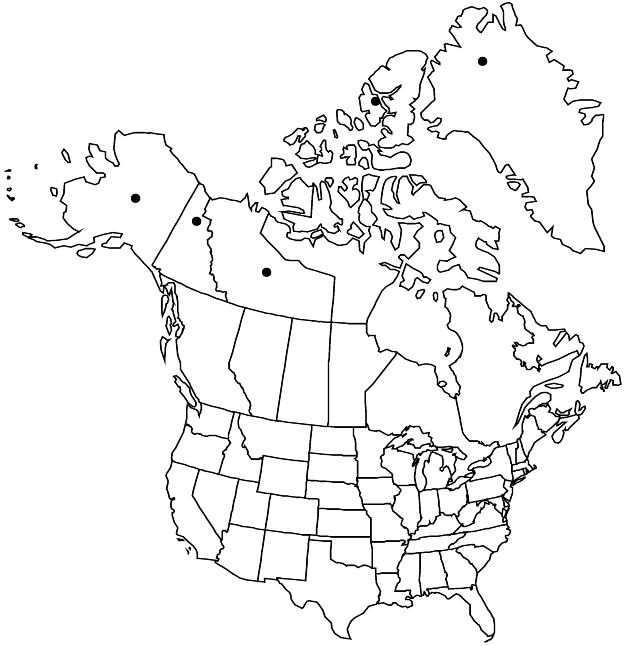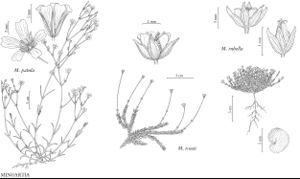Difference between revisions of "Minuartia rossii"
in P. F. A. Ascherson et al., Syn. Mitteleur. Fl. 5(1): 772. 1918.
FNA>Volume Importer |
imported>Volume Importer |
||
| (One intermediate revision by the same user not shown) | |||
| Line 1: | Line 1: | ||
{{Treatment/ID | {{Treatment/ID | ||
|accepted_name=Minuartia rossii | |accepted_name=Minuartia rossii | ||
| − | |accepted_authority=(R. Brown ex Richardson) Graebner | + | |accepted_authority=(R. Brown ex Richardson) Graebner |
|publications={{Treatment/Publication | |publications={{Treatment/Publication | ||
|title=in P. F. A. Ascherson et al., Syn. Mitteleur. Fl. | |title=in P. F. A. Ascherson et al., Syn. Mitteleur. Fl. | ||
| Line 8: | Line 8: | ||
}} | }} | ||
|common_names=Ross’s sandwort | |common_names=Ross’s sandwort | ||
| + | |special_status={{Treatment/ID/Special_status | ||
| + | |code=F | ||
| + | |label=Illustrated | ||
| + | }} | ||
|basionyms={{Treatment/ID/Basionym | |basionyms={{Treatment/ID/Basionym | ||
|name=Arenaria rossii | |name=Arenaria rossii | ||
| Line 63: | Line 67: | ||
-->{{#Taxon: | -->{{#Taxon: | ||
name=Minuartia rossii | name=Minuartia rossii | ||
| − | |authority=(R. Brown ex Richardson) Graebner | + | |authority=(R. Brown ex Richardson) Graebner |
|rank=species | |rank=species | ||
|parent rank=genus | |parent rank=genus | ||
| Line 76: | Line 80: | ||
|publication title=in P. F. A. Ascherson et al., Syn. Mitteleur. Fl. | |publication title=in P. F. A. Ascherson et al., Syn. Mitteleur. Fl. | ||
|publication year=1918 | |publication year=1918 | ||
| − | |special status= | + | |special status=Illustrated |
| − | |source xml=https:// | + | |source xml=https://bitbucket.org/aafc-mbb/fna-data-curation/src/2e0870ddd59836b60bcf96646a41e87ea5a5943a/coarse_grained_fna_xml/V5/V5_273.xml |
|subfamily=Caryophyllaceae subfam. Alsinoideae | |subfamily=Caryophyllaceae subfam. Alsinoideae | ||
|genus=Minuartia | |genus=Minuartia | ||
Latest revision as of 22:10, 5 November 2020
Plants perennial, densely pulvinate to loosely cespitose. Taproots stout, woody. Stems ascending to spreading, green or often purple, 1–3 cm, glabrous, internodes of flowering stems 0.2–1 times as long as leaves. Leaves overlapping, ± tightly (vegetative), ± evenly spaced proximally (cauline), connate-perfoliate proximally, with tight, herbaceous sheath 0.2–0.3 mm; blade upwardly curved, green or often purple, keeled, prominently 1-veined abaxially, subulate, 3-angled, 1–4 × 0.5–0.7 mm, flexuous, margins rounded, herbaceous, smooth, apex green to purple, rounded, navicular, shiny, glabrous; axillary leaves well developed. Inflorescences solitary flowers, axillary or terminal (rarely present); bracts absent. Pedicels 0.1–2 cm, glabrous. Flowers: hypanthium disc-shaped; sepals 1-veined, oblong-ovate (herbaceous portion usually purple, oblong-ovate), 1.5–2.5 mm, not enlarging in fruit, apex often purple, obtuse to acuminate, navicular, not hooded, glabrous; petals obovate to spatulate, 1.5–2 times as long as sepals, apex obtuse, entire. Capsules on stipe ca. 0.1–0.2 mm, spheric, 1.5–2.5 mm, equaling sepals. Seeds brown, suborbiculate, compression unknown, ca. 0.6 mm, obscurely reticulate. 2n = 58 (Russia), 60.
Phenology: Flowering spring–summer.
Habitat: Wet, turfy, gravelly, or sandy calcareous barrens, high arctic, alpine tundra, heathlands
Elevation: 0-500 m
Distribution

Greenland, N.W.T., Nunavut, Yukon, Alaska, Europe (Spitzbergen), Asia (Russian Far East).
Discussion
Minuartia rossii is the northernmost member of the M. rossii complex (S. J. Wolf et al. 1979; B. Maguire 1958), a pulvinate species of moist arctic areas. While specimens occasionally have many flowers, some specimens have few if any, instead reproducing via small axillary fascicles of leaves or short shoots in the upper leaf axils (see also Ö. Nilsson 2001).
Selected References
None.
